Monday August 10, 1987 - Anchorage Times
Plane recovery hits snag
A World War II-vintage PBY Catalina rests in Lake Clark Pass near King Salmon during efforts to salvage the historic aircraft.
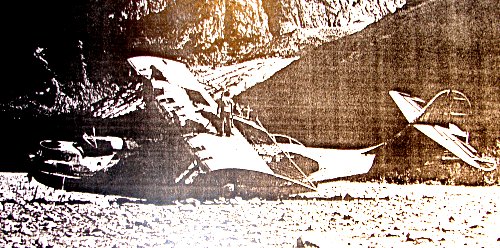
Times photos by Walt Johnson
Associated Press
Efforts to recover a World War II vintage PBY Catalina ran into a hitch during the weekend when a lift strap broke and an Alaska Army National Guard helcopter was forced to leave the plane in Lake Clark Pass.
The crew of the Sikorsky Skycrane had picked up the airplane at King Salmon for a flight to Anchorage. They set the plane down at the north end of the pass, about 125 miles southwest of Anchorage.
"We look at this as an inconvenience compared to the first efforts we began making over three years ago to get it moved from Dago Lake where it had rested for 37 years," said Ted Spencer, president of the Alaska Aviation Heritage Museum. The museum owns the plane.
Guard and museum officials were trying to obtain more special lift straps to complete the airlift sometime this week.
Spencer said his museum's PBY was built in 1943 in Canada under license from the U.S. Army Air Corps. It saw no combat during the war, he said.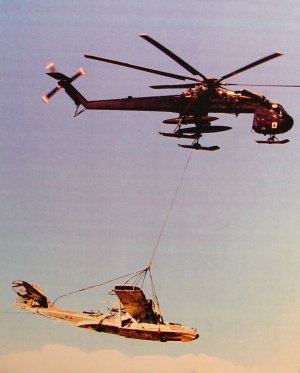
"Its historical significance Is from its type," he said. "There are fewer and fewer of these planes and they are starting to go into museums."
The plane in 1947 had an engine failure while flying over the Alaska Peninsula and landed in a shallow lake. "The plane was already obsolete by military standards," Spencer said. "After attempts to get it airworthy, the military gave up and put it up for surplus."
It became known as the "Queen of Dago Lake," he said. "I don't know where that phrase came from. It was kind of a navigational aid, a landmark. The lake actually became known as PBY lake."
Spencer said his group has been working to move the plane since 1978, and managed to get it to King Salmon in 1984.
PBY Catalinas saw heavy use in the Aleutian Islands campaign of World War 11. Nearly 1,200 of the sturdy aircraft saw service in all theaters of the War. About 800 were used by our allies.
The aircraft were designed for endurance and could fly non-stop up to 24 hours. Its maximum speed was about 175 mph at 7,000 feet. It typically cruised at 110 mph.
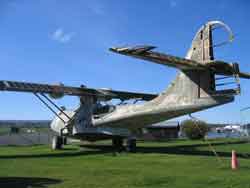
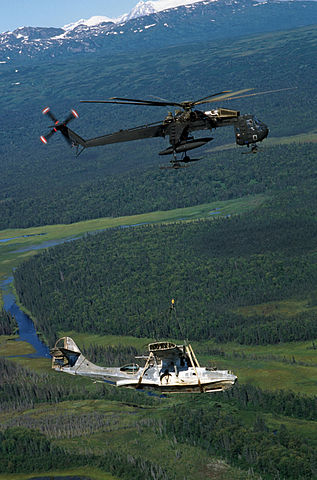
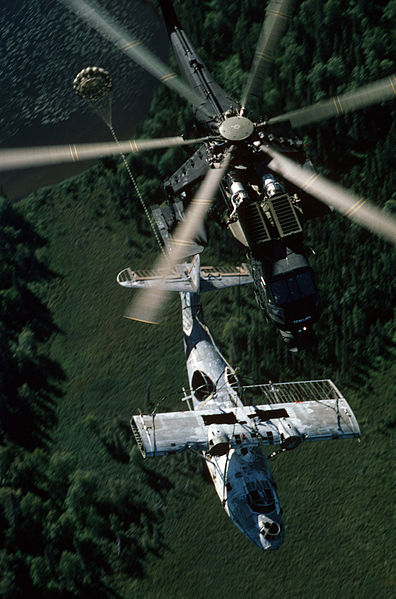
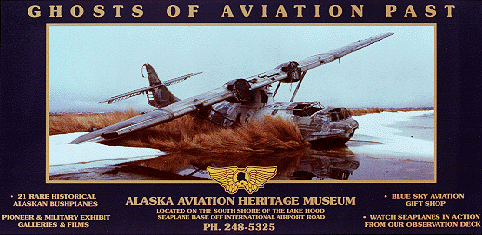 A recovery project conducted by the National Guard with volunteers from the Alaska Aviation Heritage Museum salvaged
the wreck in 1987, transported from King Salmon to Anchorage and Alaska Aviation Heritage Museum.
A recovery project conducted by the National Guard with volunteers from the Alaska Aviation Heritage Museum salvaged
the wreck in 1987, transported from King Salmon to Anchorage and Alaska Aviation Heritage Museum.